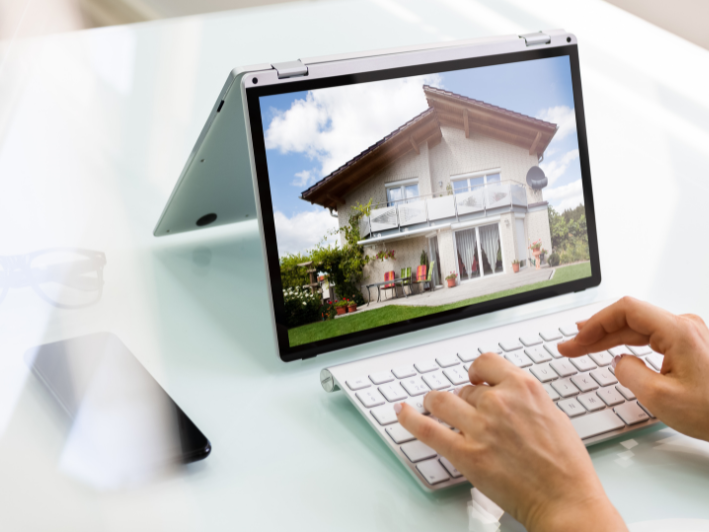
As our loved ones age, their needs and abilities evolve, making it increasingly important to create a home environment that supports safety, comfort, and accessibility. Whether you’re setting up a space for aging parents, grandparents, or planning ahead for your own future, incorporating the right home safety tips for seniors can make a meaningful difference. From thoughtful layout changes to simple safety upgrades, these home safety tips for seniors will help ensure your home is both welcoming and secure. Here are some key design and safety considerations for creating a truly senior-friendly home.
Home Safety Tips for Seniors #1: Improve Accessibility
- Entryways & Doorways: Ensure entrances have ramps or minimal steps and widen doorways to at least 36 inches to accommodate walkers or wheelchairs.
- Open Floor Plan: Reduce clutter and unnecessary furniture to allow for easy navigation.
- Lever-Style Door Handles: These are easier to operate than traditional round knobs, particularly for those with arthritis.
Home Safety Tips for Seniors #2: Enhance Bathroom Safety
- Install Grab Bars: Secure grab bars near toilets, showers, and bathtubs to prevent falls.
- Walk-In Showers & Tubs: Replace traditional tubs with walk-in versions or curbless showers for easier access.
- Non-Slip Flooring: Use slip-resistant mats and flooring materials to minimize the risk of slipping.
- Raised Toilet Seats: These make it easier for seniors to sit down and stand up without straining.
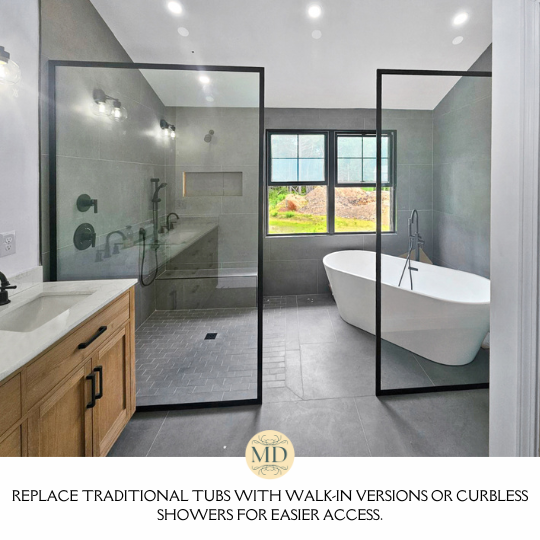
Home Safety Tips for Seniors #3: Create a Safe Kitchen
- Pull-Out Shelving & Lazy Susans: These help reduce bending and reaching, making kitchen essentials more accessible.
- Easy-to-Use Appliances: Opt for appliances with large, easy-to-read buttons and automatic shut-off features.
- Proper Lighting: Install under-cabinet lighting and motion-sensor lights to improve visibility.
Home Safety Tips for Seniors #4: Optimize Bedroom Comfort & Safety
- Adjustable Bed Heights: Ensure the bed is at a comfortable height for getting in and out easily.
- Bedside Lighting & Emergency Call Devices: Place lamps within easy reach and consider installing emergency alert systems.
- Minimize Trip Hazards: Remove area rugs and ensure electrical cords are safely tucked away.
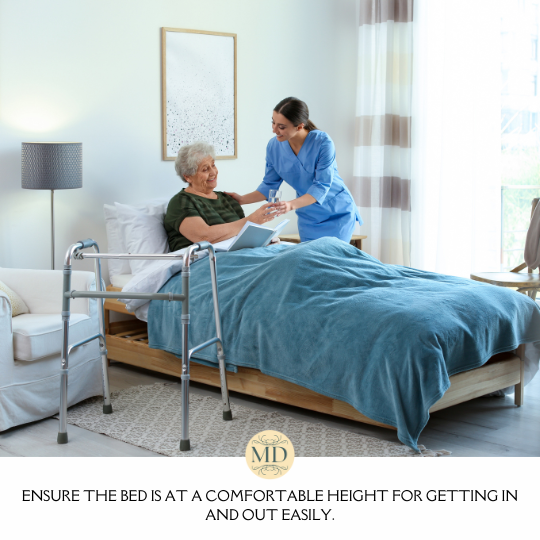
Home Safety Tips for Seniors #5: Improve Lighting Throughout the Home
- Use Brighter Bulbs: Older adults often need more light to see clearly. Opt for LED lights with adjustable brightness.
- Motion-Activated Lighting: Install motion-sensor lights in hallways, staircases, and bathrooms to prevent falls at night.
Home Safety Tips for Seniors #6: Secure Stairways & Hallways
- Sturdy Handrails: Install secure, easy-to-grip handrails on both sides of staircases.
- Non-Slip Steps: Apply non-slip strips or carpeting to reduce the risk of slipping.
- Chair Lifts: Consider stairlifts for multi-story homes to enhance mobility.
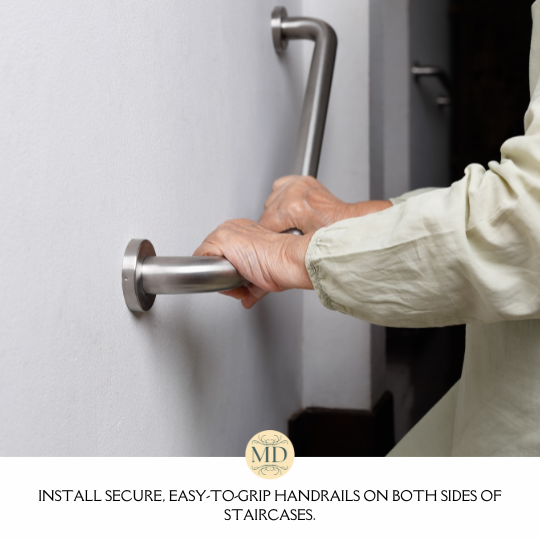
Home Safety Tips for Seniors #7: Smart Home Technology for Safety
- Medical Alert Systems: Wearable emergency response systems provide immediate assistance in case of falls or medical emergencies.
- Smart Doorbells & Security Cameras: These allow seniors to see who is at the door without having to open it.
- Voice-Controlled Devices: Smart home assistants can control lights, thermostats, and appliances without requiring physical effort.
Home Safety Tips for Seniors #8: Outdoor Safety & Accessibility
- Level Walkways: Ensure outdoor paths are even and free from tripping hazards.
- Secure Railings & Seating Areas: Provide sturdy railings along porches and patios, along with comfortable seating.
- Adequate Outdoor Lighting: Install pathway and entryway lighting for visibility during evening hours.
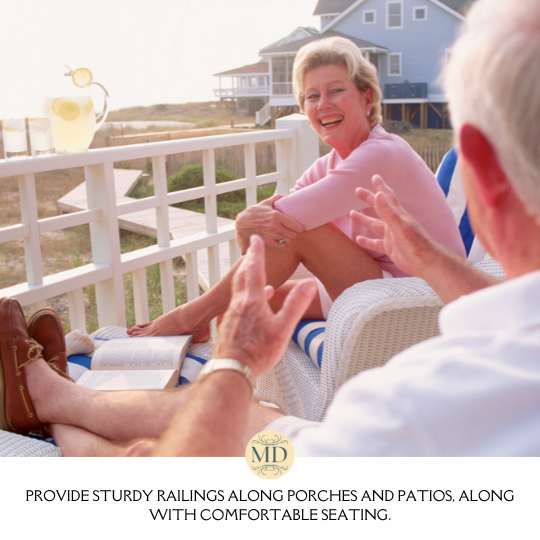
Final Thoughts
Aging in place is an important goal for many seniors who wish to remain in the comfort of their own homes as they grow older. With a few thoughtful modifications, any home can be transformed into a safer, more functional, and more comfortable space that supports both independence and daily living. From improving lighting to eliminating fall hazards, implementing the right home safety tips for seniors can make a significant difference in quality of life. These design choices not only reduce the risk of injury but also promote confidence and peace of mind for seniors and their families. By planning ahead and making intentional updates, you can create a supportive environment where seniors can continue to thrive.

